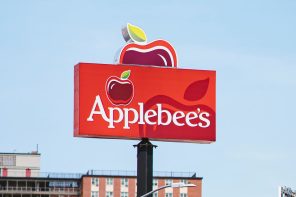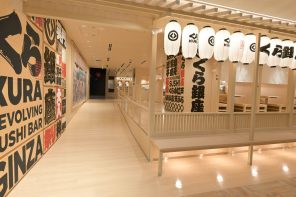Every year, Euromonitor International identifies emerging and fast-moving trends that are expected to gain traction in the year ahead. These trends provide insight into changing consumer values, exploring how consumer behaviour is shifting and causing disruption for businesses globally.
The world changed for good, and bad, in 2020. Emerging habits accelerated, and how people now behave, spend, and consume will never be the same.
In 2021, consumers want new ways to make life both convenient and safe, inside and outside. Amidst the anxiety and turmoil, they seek holistic, resilient solutions, more thoughtful consumption and, in some cases, ways to fight back. Resilience and adaptability are the driving forces behind the top global consumer trends in 2021. The pandemic created, influenced, or accelerated each of these, forever altering consumer behaviour.
Despite the hardships faced in 2020, consumers have not given up. They continue to find their voice and push forward to advocate for a better tomorrow.
The Top Ten Trends in a Nutshell:

Build Back Better
Consumers demand that companies care beyond revenue, and they no longer perceive businesses as profit-driven entities. Protecting the health and interest of society and the planet is the new expectation, following COVID-19, to Build Back Better.
With consumers paying closer attention to companies’ actions during lockdowns, brand activism gained a new sense of social purpose. In 2020, 73% of professionals believed sustainability initiatives were considered critical to success. Businesses had to prioritise social action and help consumers achieve more sustainable lifestyles.
More businesses will reposition from a pure-profit strategy to join the purpose-driven movement. Build Back Better will improve business resilience, brand reputation and financial value.
Craving Convenience

Consumers are Craving Convenience, longing for the ease taken for granted before daily habits were upended. Businesses are under pressure to rapidly adapt their operations to develop a resilient customer experience while maintaining convenience.
The pandemic accelerated digital adoption. Digital commerce provides a seamless experience without the in-person component that consumers are familiar with. However, usage varies amongst generations, and businesses need to account for the disparity between what customers of different ages perceive to be convenient.

Businesses can save time, guarantee availability, and fulfil delivery through QR codes, reservations and identifying busy and calm shopping periods, amongst other initiatives — all of which cater to new consumer routines. Solution-based products and services will drive Craving Convenience forward.
Outdoor Oasis
City dwellers are searching for an Outdoor Oasis to support their mental and physical wellbeing. Consumers still desire socialisation and human connection despite health hazards associated with large gatherings. An Outdoor Oasis provides a change of scenery and enables the feeling of connectedness while disconnecting from crowds. Dining, exercising, socialising, and relaxing in open-air venues become essential for trapped consumers.
Adopting business models to suit adverse weather conditions and addressing health concerns will be major business tactics to cater to Outdoor Oasis consumers. Creating both indoor and outdoor offerings will ensure business continuity.
‘Phygital’ Reality (Physical and Digital Worlds Collide)

Digital tools allow consumers to stay connected while at home and re-enter the outside world safely as economies reopen. Phygital Reality is a hybrid of physical and virtual worlds where consumers can seamlessly live, work, shop and play both in-person and online.
Consumers embraced internet-connected devices to maintain their daily routines amidst COVID-19 lockdowns. Video conferencing, smart appliances, and technologies like augmented reality (AR) and virtual reality (VR) helped consumers form new habits around working, learning, exercising, shopping and socialising.
Brick-and-mortar businesses are using technologies to achieve Phygital Reality, implementing processes that encourage customers to safely visit onsite with the help of smart devices.

Businesses can develop a Phygital Reality strategy using apps to facilitate onsite virtual experiences and partnering with technology providers to recreate in-person occasions at home. Companies that deliver safe and memorable experiences via multiple methods and platforms will develop loyal customers. Incorporating Phygital Reality will continue driving sales and assist with data collection, both online and in-store.
Playing With Time
Consumers are now both able and forced to be more creative with their time in order to get everything done. Businesses should provide solutions that address the consumer desire to maximise time, offering increased flexibility, especially with products and services that can be accessed from or near the home.
Businesses are responding to Playing with Time as consumers have greater flexibility in their daily lives. Foodservice operators and retailers are also reimagining their physical outlets, using the spaces for online order fulfilment or curbside pick-up services, in response.
Restless and Rebellious

Consumers are fed up. Distrust in leadership has become the norm and bias and misinformation are causing a crisis of confidence. Having suffered, put others first and gone without, these self-care aficionados are now rebelling, placing their own needs and wants first. Companies can cater to the Restless and Rebellious via more precise marketing on social media where they can give consumers a voice and pressure social giants to take on misinformation.
In 2020, 37 percent of consumers shared their data to receive personalised and targeted offers and deals. More precise marketing on social media will be key for a company navigating 2021 and beyond. Online virtual experiences will remain relevant, and businesses will be at a loss if they do not consider these avenues for growth and branding.
Safety Obsessed

Safety Obsessed is the new wellness movement. The fear of infection and increased health awareness drive demand for hygiene products and push consumers towards contactless solutions to avoid exposure. Companies should implement enhanced safety measures and innovations that target concerns to reassure consumers.
Efficiency and cleanliness are no longer trade-offs but expectations amongst Safety Obsessed consumers. Companies across industries should develop robust hygiene initiatives in response to heightened concerns. Washing hands more frequently and wearing masks are normalised habits today.

Concerns surrounding the origin and delivery of products and services are elevating safety standards. Businesses that incorporate exceptional sanitation features into products and services, while communicating these benefits, will attract Safety Obsessed consumers.
Consumer needs will evolve from basic hygiene to general health. As consumers turn to necessities, a safe and trusted brand image will be an intangible asset for businesses.
Shaken and Stirred (Rising Above Adversity)
The global pandemic reconfigured daily lives, testing mental resilience, restricting experiences and provoking economic shocks. Consumers have a new understanding of themselves and their place in the world in pursuit of a more fulfilled, balanced and self-improve life. Businesses must provide products and services that support resiliency for mental wellbeing and to help Shaken and Stirred consumers weather adverse circumstances to gain trust.

Companies offering digital products and services are best equipped to help Shaken and Stirred consumers access information and virtual engagements to promote self-improvement and lifestyle balance. Consumers are resorting to nostalgic comforts like childhood snacks that provide immediate stress relief. Various industries will benefit depending on unique preferences, as consumers conform to a changing environment.
Products and experiences that offer self-improvement, skill development, life balance support and financial resilience will gain traction even as the pandemic wanes. Companies should communicate how their product serves consumers in a world where they are dedicating more time for themselves.
Thoughtful Thrifters
Consumers are cautious and frugal. Discretionary spending is declining due to the uncertain economic environment. Thoughtful Thrifters are prioritising value-added and health-conscious products and services. Companies should pivot towards value-for-money propositions, offering affordable options without sacrificing quality.
Brands should find innovative ways to regain value and enhance the price-value equation. Convenience, increased online penetration, fast last-mile delivery or add-on services are ways companies can achieve this. A focused, insights-driven, locally tailored promotional plan will enhance return on investment.

Workplaces in New Spaces
Out of office took a new meaning in 2020. Workplaces in New Spaces had a rippling effect on consumer life, from clothing choices to technology spend to eating habits and beyond. Consumers are searching for new ways to define the beginning and end of their workdays, as they struggle to manage their time. Businesses must support work-life balance, productivity and communication needs.
With less mobility, consumers are spending more to emulate the dining, shopping or other leisure experiences in their homes.
Businesses should give consumers a sense of belonging and connection through interactive digital engagements. Advanced technologies can help both companies and consumers maintain the same level of productivity remotely as in an office setting.






